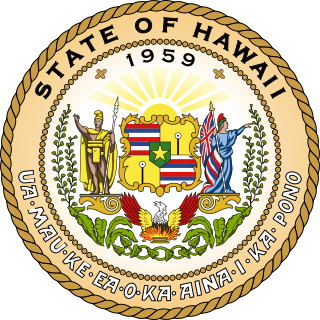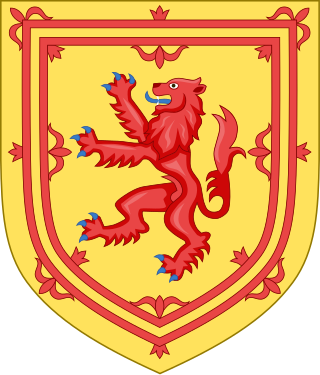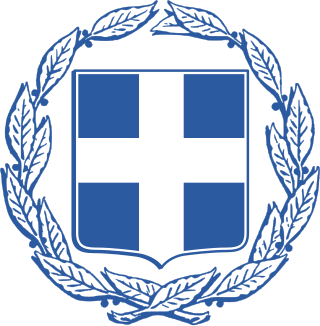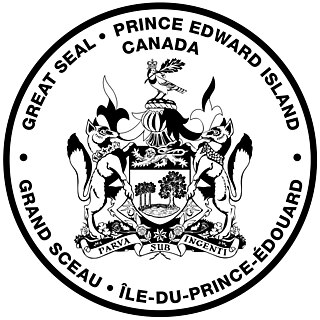Related Research Articles

The coat of arms of Canada, also known as the Royal Coat of Arms of Canada or, formally, as the Arms of His Majesty The King in Right of Canada, is the arms of dominion of the Canadian monarch and, thus, also the official coat of arms of Canada. In use since 1921, it is closely modelled after the royal coat of arms of the United Kingdom, with French and distinctive Canadian elements replacing or added to those derived from the British version.

The coat of arms of Saskatchewan, officially known as His Majesty's Arms in right of Saskatchewan, is the heraldic symbol representing the Canadian province of Saskatchewan.

The coat of arms of the United Kingdom are the arms of dominion of the British monarch. They are both the personal arms of the monarch, currently King Charles III, and the arms of the state. In addition to the monarch, the arms are used by state institutions including the Government of the United Kingdom, the Parliament of the United Kingdom, and the British judiciary. Differenced versions of the arms are used by members of the British royal family. The monarch's official flag, the Royal Standard, is the coat of arms in flag form.

The coat of arms of the state of New Jersey includes:

The coat of arms of Australia, officially the Commonwealth Coat of Arms, is a formal symbol of the Commonwealth of Australia. It depicts a shield, containing symbols of Australia's six states, and is held up by native Australian animals, the kangaroo and the emu. The seven-pointed Commonwealth Star surmounting the crest also represents the states and territories, while golden wattle, the national floral emblem, appears below the shield.

The coat of arms of Warsaw consists of a syrenka in a red field. This imagery has been in use since at least the mid-14th century. The syrenka has traditionally held a silver sword although this does not appear on more recent versions.

The coat of arms of Newfoundland and Labrador was originally granted by Garter King of Arms, during the reign of King Charles I, on 1 January 1637/8.

The Great Seal of the State of Hawaii was designated officially by Act 272 of the 1959 Territorial Legislature and is based on the territorial seal. Modifications to the territorial seal included the use of the words "State of Hawaii" at the top and "1959" within the circle. Provisions for a seal for the state of Hawaii were enacted by the Territorial Legislature and approved by Governor William F. Quinn on June 8, 1959. The passage of the Admission Act in 1959, admitted Hawaii as the 50th State of the United States of America on August 21, 1959.

The Great Seal of Ontario is a governmental seal used to authenticate documents issued by the Canadian Government of Ontario that are released in the name of the King in Right of Ontario, including the appointment of the Executive Council and Ministers.

The state seal of New York features the state arms surrounded by the words "The Great Seal of the State of New York". A banner below shows the New York State motto Excelsior, Latin for "Ever Upward", and the secondary motto E Pluribus Unum, Latin for "Out of Many, One"—adopted in 2020.

The Great Seal of the State of New Mexico is the official seal of the U.S. state of New Mexico. It is enshrined in Article V, Section 10, of the New Mexico State Constitution, which requires a state emblem to be kept by the secretary of state for official documents and other expressions of statehood. Rooted in the official seal of the New Mexico Territory established in 1851, it was adopted in 1913, one year after New Mexico was admitted as the 47th state.

The Seal of the State of Texas was adopted through the 1845 Texas Constitution, and was based on the seal of the Republic of Texas, which dates from January 25, 1839.

The Great Seal of the State of Alabama is the state seal of the U.S. state of Alabama.

The Great Seal of the State of Ohio is the official insignia of the U.S. state of Ohio. All governmental offices, agencies, and courts in Ohio use variations of the state seal. Its primary feature is a circular coat of arms that depicts a sunrise in Chillicothe, Ohio's first capital, along with symbols of the state's origins. The seal sometimes appears with the state motto, "With God, All Things Are Possible".

The coat of arms of Scotland, colloquially called the Lion Rampant, is the coat of arms historically used as arms of dominion by the monarchs of the Kingdom of Scotland, and later by monarchs of Great Britain and the United Kingdom. The coat of arms, or elements from it, are also used in heraldry to symbolise Scotland in general. The arms consist of a red lion surrounded by a red double border decorated with fleurs-de-lis, all on a gold background. The blazon, or heraldic description, is: Or a lion rampant Gules armed and langued Azure within a double tressure flory-counter-flory of the second.

The coat of arms of Greece or national seal of Greece comprises a white Greek cross on a blue escutcheon, surrounded by two laurel branches. It has been in use in its current form since 1975. Prior to the adoption of the current coat of arms, Greece used a number of different designs, some of which were not heraldic; the first heraldic design was introduced in 1832 and its main element, the blue shield with the white cross, has been the base for all other national coats of arms since then. The design is a heraldic representation of the Greek national flag adopted in 1822, which featured a white cross on a blue field.

Since unification in 1910, South Africa has used a range of national symbols to identify the country: coats of arms, official seals, flags, national anthems, and floral, bird, animal, and other emblems.

The Great Seal of Quebec is a governmental seal used to authenticate documents issued by the Government of Quebec that are released in the name of the King in Right of Quebec, including the appointment of the Executive Council and Ministers, as well as justices of the peace and judges of provincial courts.
The Great Seal of British Columbia is a seal used to authenticate documents issued by the government of British Columbia that are released in the name of the King in Right, including the appointment of the Executive Council and Ministers.

Great Seal of Prince Edward Island is a seal used to authenticate documents issued by the government of Prince Edward Island that are released in the name of the King in Right, including the appointment of the Executive Council and Ministers.
References
- ↑ "Government of Saskatchewan". saskatchewan.ca. Retrieved 2017-10-05.
- ↑ "Saskatchewan Emblems and Flags | Visual Identity and Protocol | Government of Saskatchewan". saskatchewan.ca. Retrieved 2017-10-05.